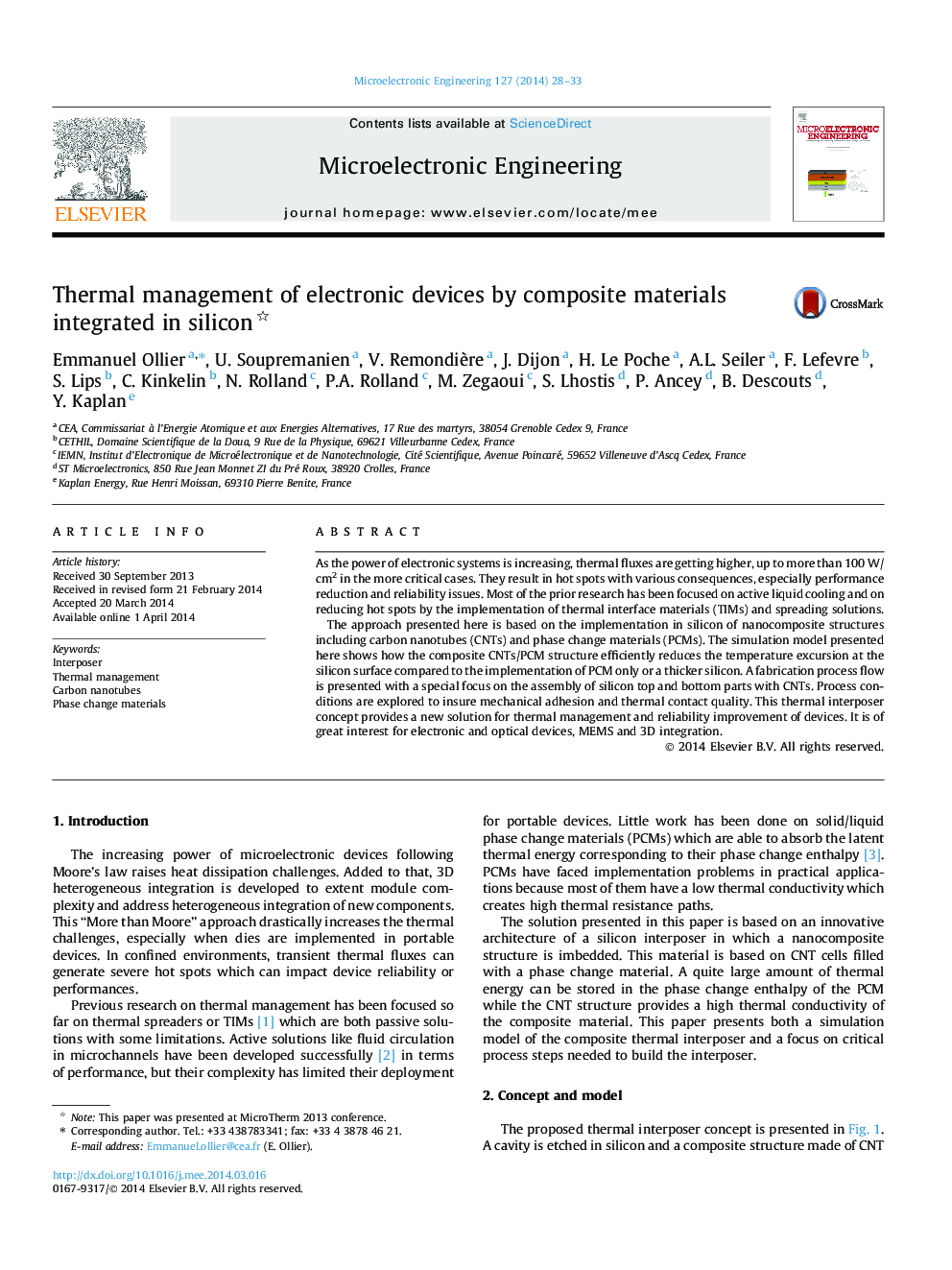| Article ID | Journal | Published Year | Pages | File Type |
|---|---|---|---|---|
| 542426 | Microelectronic Engineering | 2014 | 6 Pages |
•A novel concept of thermal management based on CNT and PCM is proposed.•Simulations show the benefits of the nanocomposite structure for thermal management.•A basic process flow is proposed to build the thermal interposer.•Critical process steps are detailed: PCM selection, CNT growth, interface improvement.•Thermal tests show the improvement of Si/CNT interface with a specific assembly process.
As the power of electronic systems is increasing, thermal fluxes are getting higher, up to more than 100 W/cm2 in the more critical cases. They result in hot spots with various consequences, especially performance reduction and reliability issues. Most of the prior research has been focused on active liquid cooling and on reducing hot spots by the implementation of thermal interface materials (TIMs) and spreading solutions.The approach presented here is based on the implementation in silicon of nanocomposite structures including carbon nanotubes (CNTs) and phase change materials (PCMs). The simulation model presented here shows how the composite CNTs/PCM structure efficiently reduces the temperature excursion at the silicon surface compared to the implementation of PCM only or a thicker silicon. A fabrication process flow is presented with a special focus on the assembly of silicon top and bottom parts with CNTs. Process conditions are explored to insure mechanical adhesion and thermal contact quality. This thermal interposer concept provides a new solution for thermal management and reliability improvement of devices. It is of great interest for electronic and optical devices, MEMS and 3D integration.
Graphical abstractFigure optionsDownload full-size imageDownload as PowerPoint slide
